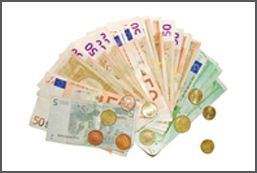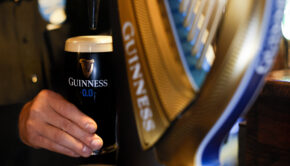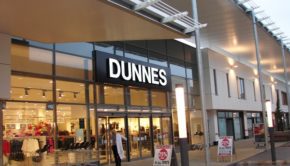Retailers feel the pain

Retailers didn’t need the ESRI to tell them that something was very wrong with the economy. They have been feeling the draught since the credit crisis ended the era of cheap money last August.
12 August 2008
When the economic history of Ireland in the noughties comes to be written, Tuesday 24 June 2008 will probably merit a chapter all by itself. That was the day the ESRI issued its most recent quarterly economic commentary. In the commentary the ESRI cut its previous growth forecasts and predicted that, far from growing, the Irish economy would shrink by 0.4% this year.
We should have seen the signs
Of course for those who have had their ears to the ground the ESRI forecast came as no surprise. They had seen the mounting evidence that the Irish economic boom, which had lasted since 1993, was finally over.
With the benefit of hindsight it is now clear that the IIB consumer confidence index was one of the best barometers of what was happening in the ‘real’ economy. This measures how consumers feel about their current and future financial prospects. This first started to turn down in early 2006 and is now at its lowest level for 16 years, lower even than its previous trough in the first half of 2003.
House prices and rising interest rates also provided advance warning that the party was drawing to a close. The ECB started increasing rates in December 2005 and house prices began falling in early 2007.
Despite all of these warning signals retail sales, perhaps sustained by all of those maturing SSIAs, remained remarkably buoyant well into 2007. As late as last September retail sales were still growing at an annual rate of 8% in value terms.
The world has changed a lot in the last ten months. The credit crisis, which first struck in August 2007, now looks more like a permanent state of affairs than a temporary aberration. Oil prices, which stood at just $70 a barrel in September 2007, had more than doubled to over $140 by mid-July.
This combination of dearer energy and rising interest rates has had a devastating impact on consumer confidence. Consumers are having to pay far higher ESB and gas bills while rising interest rates have pushed up the monthly mortgage repayments on their homes. Just to rub salt into the wound those homes are now far less valuable than they once were with prices having fallen by an average of almost 12% since March 2007.
The impact of this lethal cocktail is plain for all to see. Since the beginning of the year retail sales have fallen off a cliff. Retail sales have been falling by around 1% a month since February. According to the most recent CSO figures, retail sales had fallen by a cumulative 4.5% in the four months to May. That translates into an annualised rate of decrease of almost 13%.
In practice things probably aren’t quite that bad as the decline in retail sales was exaggerated by the fall-off in car sales during the first half of the year as people put off buying a new car until the new VRT rules came into force on 1 July.
However, even when VRT effect is filtered out, the picture painted by the retail sales figures is a depressing one. Excluding motor vehicles the annual rate at which retail sales are rising has fallen from 9.8 % in May 2007 to just 1.2 % by May 2008. Retail sales declined month-on-month in both March and April before recovering slightly in May.
Utility bills on the rise
The May recovery in retail sales is almost certainly a temporary one. With ESB bills having gone up by 17% at the beginning of this month and a massive increase in gas bills also on the way it is hardly any surprise than Irish consumers are keeping their hands in their pockets. This has translated into much lower retail property values with estate agent CB Richard Ellis suggesting that anyone seeking to sell a Grafton Street shop now would have to accept just half the price they could have expected to receive at the peak of the boom just over two years ago.
On the basis that friends in
distress makes misery less, it should
of course be pointed out that Irish retailers aren’t unique in suffering from a fall-off in consumer demand. If anything, the situation is even worse in the UK.
For the first four years after he was appointed chief executive of Marks & Spencer it seemed as if Stuart Rose could do no wrong. He revived the iconic British retailer and the share price soared to almost three times its value when Rose was appointed in 2004. Now, just 13 months later, the share price is back to just £2.67, below where it was when Rose was first recruited as chief executive.
Even discount clothing retailer Primark, which trades as Penneys in this country, has warned that its sales are being impacted by the downturn in consumer confidence, while Tesco has warned that declining consumer confidence is leading to lower growth in its non-food sales.
No mystery
What’s happening is no mystery. Interest rate increases and dearer energy have had the same effect as a huge tax increase. Consumers find that their disposable incomes have been savaged and cut back on other types of spending. Until energy prices and interest rates start to come down once again retailers everywhere will remain under pressure.
Despite all of these warning signals, retail sales — perhaps sustained by all of those maturing SSIAs — remained remarkably buoyant well into 2007. As late as last September retail sales were still growing at an annual rate of 8% in value terms. In practice, things probably aren’t quite that bad as the decline in retail sales was exaggerated by the fall-off in car sales during the first half of the year.



 Print
Print






Fans 0
Followers